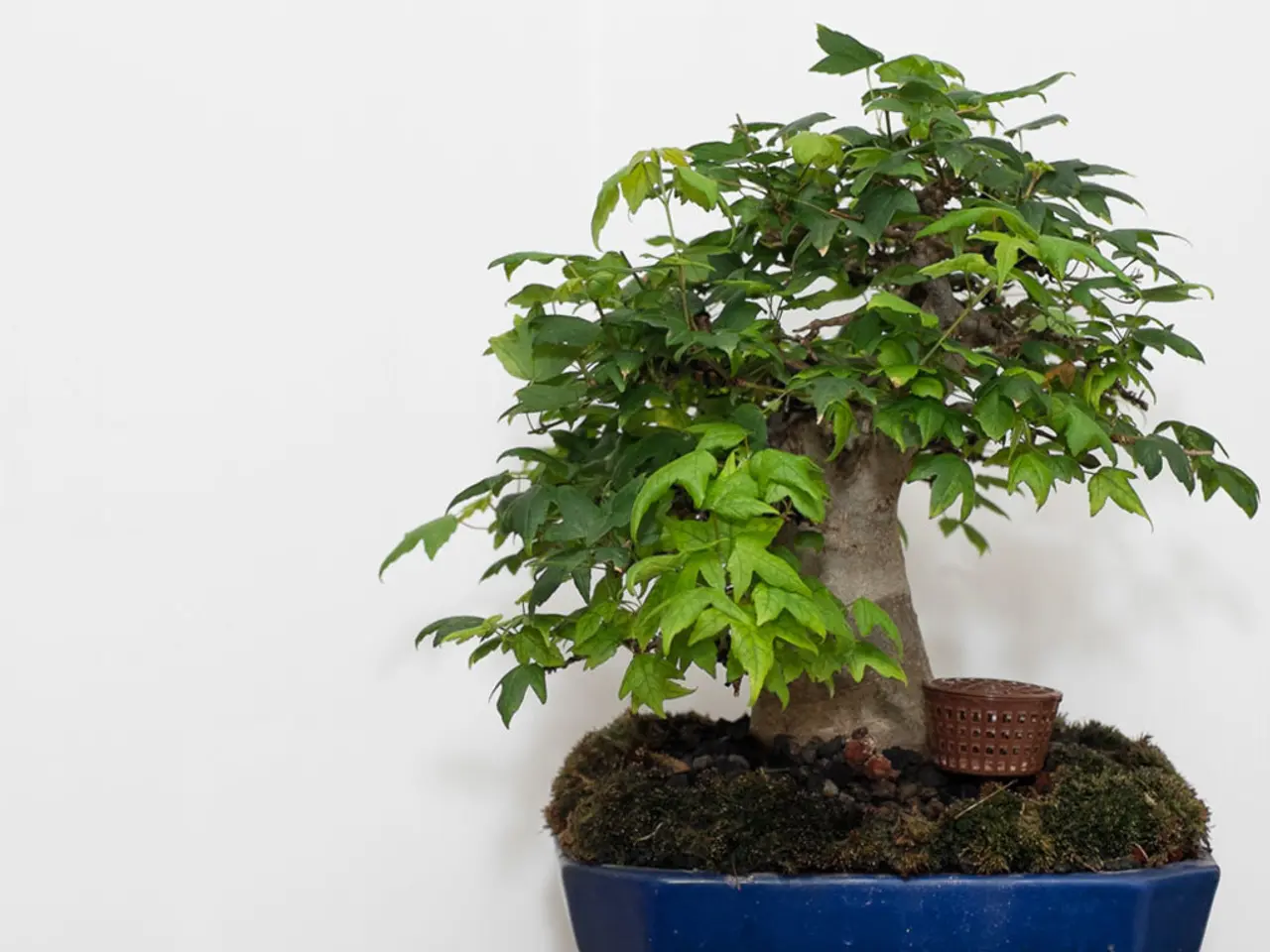Troubleshooting Bonsai Fertilizer Issues: Recognizing and Resolving Underlying Problems
In the intricate world of bonsai cultivation, maintaining vibrant growth requires a delicate balance of tree health, soil conditions, and fertilization practices. Identifying nutrient deficiencies can involve soil testing, foliar analysis, or visual examination of the tree's symptoms.
However, a bonsai tree may fail to respond to fertilizer primarily due to root problems. Compacted soil or poor drainage, root crowding, watering issues, pests and diseases, planting errors, and root competition can all weaken the tree's overall health and growth response.
Compacted soil or poor drainage leads to low oxygen availability for roots, resulting in anaerobic conditions that inhibit root growth and nutrient uptake. Root crowding occurs when bonsai have limited soil volume, and roots can fill pores, reducing aeration and limiting fertilizer absorption. Overwatering or underwatering can stress roots, causing leaves to yellow or wilt and impairing the tree's ability to use fertilizer.
Pests and diseases, such as spider mites, mealybugs, scale insects, aphids, whiteflies, and various fungal or bacterial infections, weaken plants and disrupt normal growth responses. Planting errors, like too deep planting or poorly loosened soil, can stunt roots and reduce fertilizer efficiency. Root competition, caused by proximity to larger plants, can limit resources available to the bonsai, reducing fertilizer effectiveness.
Addressing soil quality and root health through proper repotting, watering, and pest management is essential for the bonsai to respond effectively to fertilizer application. Regular repotting is vital to prevent rootbound conditions, and as a general rule, repot the bonsai tree every 2-5 years. Checking the soil moisture, watering with intention, monitoring weather patterns, and observing the tree's response can help avoid watering pitfalls.
Synchronizing fertilizer applications with the tree's natural cycles is also crucial. Spring requires a balanced fertilizer for new growth and development, summer a high-nitrogen fertilizer for foliage development and coloration, fall a phosphorus-rich fertilizer for root development, and winter a low-nitrogen, high-potassium fertilizer to maintain tree health during dormancy.
Inadequate watering can lead to drought or deluge, both of which can hinder a tree's ability to respond to fertilizer. Bonsai trees can recover from prolonged periods of nutrient deficiencies with proper care, patience, and targeted intervention. Pest infestations can silently ravage a bonsai, consuming essential nutrients and causing irreparable damage to the tree's delicate structure.
By understanding these factors and taking proactive steps to maintain soil quality, root health, and pest management, you can ensure your bonsai responds effectively to fertilizer, fostering vibrant growth and a beautiful, thriving bonsai.
Maintaining a good home-and-garden lifestyle for your bonsai tree includes providing the right balance of soil conditions, proper watering, and effective pest management. Neglecting root health through compacted soil, poor drainage, or root crowding can inhibit nutrient uptake and the tree's response to fertilizer, leading to weak growth.




